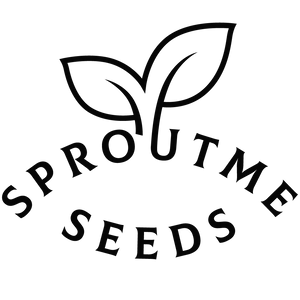Anise is a flavorful herb known for its licorice-like taste and aromatic seeds. Growing your own anise allows you to enjoy its culinary and medicinal benefits fresh from the garden.
Preparing for Growing:
- Selecting a planting location: Choose a sunny spot with well-drained soil.
- Soil preparation: Ensure the soil is loose, well-draining, and rich in organic matter.
- Purchasing or preparing containers/pots: Anise can be grown in containers if space is limited. Ensure containers have drainage holes.
Starting from Seeds Indoors:
- Seed preparation: Soak seeds in warm water overnight to improve germination.
- Choosing suitable pots/containers: Use seed trays or small pots filled with seed-starting mix.
- Sowing and caring for seeds indoors: Sow seeds ¼ inch deep and keep soil consistently moist. Provide warmth and light for optimal germination.
- Transplanting to larger containers if necessary: Once seedlings have developed true leaves, transplant them into larger containers to provide ample space for root growth.
Starting from Seeds Outdoors:
- Soil preparation: Prepare a fine seedbed by removing debris and loosening the soil.
- Selecting appropriate timing and method for outdoor sowing: Sow seeds directly into the garden after the last frost date in your area.
- Caring for seeds outdoors: Keep the soil evenly moist until seeds germinate, which typically takes 7-14 days.
Growing in Containers/Pots:
- Selecting suitable plants for containers: Choose compact varieties suitable for container growing.
- Container and soil preparation: Ensure containers have good drainage and use a well-draining potting mix.
- Sowing or transplanting plants into containers: Plant seeds or transplant seedlings into containers, spacing them according to package instructions.
- Caring for container plants: Water regularly to keep the soil evenly moist and fertilize every 4-6 weeks with a balanced fertilizer.
Transplanting to Garden:
- Soil and planting site preparation: Amend garden soil with compost and ensure proper drainage.
- Correct timing and method for transplanting: Transplant seedlings when they have 3-4 true leaves, spacing them 6-12 inches apart.
- Post-transplant care: Keep soil evenly moist and provide a light layer of mulch to retain moisture.
Plant Care:
- Watering: Anise prefers consistently moist soil, so water regularly, especially during dry spells.
- Fertilizing: Apply a balanced fertilizer every 4-6 weeks to promote healthy growth.
- Weeding: Keep the area around anise plants free of weeds to reduce competition for nutrients.
- Pest and disease management: Monitor for pests like aphids and diseases like powdery mildew. Use organic pest control methods when needed.
Harvesting:
- Determining when plants are ready for harvest: Anise leaves can be harvested once the plant reaches 6-8 inches in height. Seeds are ready for harvest when they turn brown and dry on the plant.
- Harvesting and storage guidelines: Cut anise leaves as needed for culinary use. Harvest seeds by cutting seed heads when they are fully mature and drying them in a well-ventilated area. Store seeds in an airtight container in a cool, dark place.
When to Start from Seeds by USDA Plant Hardiness Zones:
- USDA Zones 3-8: Start seeds indoors 6-8 weeks before the last frost date, or sow directly outdoors after the danger of frost has passed.
- USDA Zones 9-11: Sow seeds directly outdoors in late summer for a fall harvest, as anise prefers cooler temperatures for optimal growth.
Fast Facts:
- Planting depth: ¼ inch
- Seed spacing: 6-12 inches
- Plant spacing: 6-12 inches
- Number of seeds per pot/container: 2-3 seeds per pot
- Water preferences: Evenly moist soil
- Sun preferences: Full sun
- Soil type and other important factors: Well-draining soil rich in organic matter
- Companion Planting: Anise grows well with coriander, dill, and cilantro.
- Temperature Preference: Cool to moderate temperatures, prefers temperatures between 60-75°F.
- Days to Germination: 7-14 days
- Days to Harvest: Leaves: 6-8 weeks after planting, Seeds: 120-150 days after planting.








